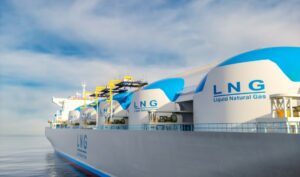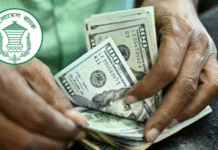 Bangladesh’s economic crisis is set to take on a new dimension this year with the country introducing its first-ever power plants that will exclusively operate on imported liquefied natural gas.
Bangladesh’s economic crisis is set to take on a new dimension this year with the country introducing its first-ever power plants that will exclusively operate on imported liquefied natural gas.
In the past year, Bangladesh generated half of its electricity from gas supplied through the gridline, in which imported LNG was mixed with local gas, which accounted for three-fourths of the supplied gas.
Over half of the more than 11,000MW of power capacity relying on gas sat idle in the past year because of a fuel shortage, partly because of the ongoing dollar crisis, and partly because Bangladesh lacked adequate infrastructure to import LNG.
The new LNG-based power plants are set to increase gas-based power generation capacity by more than 2,500MW, with the economic crisis going from bad to worse and the LNG import infrastructure remaining the same at least until 2026.
At least four LNG-based power plants are supposed to come online this year, along with three privately owned power plants with a capacity charge entitlement of $29.5 crore (approximately Tk 3,245 crore).
The capacity charge is a fixed cost payable to private power plants regardless of whether they produce any electricity.
In the past year, Bangladesh paid $156.3 crore (approximately Tk 17,193 crore according to the current exchange rate) as a capacity charge, with half of the 25,951MW installed power generation capacity remaining idle.
‘This is unbelievable. The situation is only going to get worse,’ said Hasan Mehedi, member secretary of the Bangladesh Working Group on Ecology and Development, a platform for green activists.
Evidence suggests Bangladesh’s power generation from gas has steadily dropped over the past three years, he said, producing an account for Bangladesh’s declining capacity to use gas in the power sector.
In 2023, Mehedi said, 50.8 per cent of electricity was generated from gas, following 53.8 per cent of electricity produced in the year before coming from gas and 59.3 per cent in 2021.
The four LNG-based power plants supposed to come online this year are three Meghnaghat power plants – 583MW, 584MW, and 718MW, and the 800MW Rupsa power plant.
The Meghnaghat power plants are privately owned joint ventures, with two of them having a common foreign partner – Japan’s top power generator, JERA.
The other owners of the power plants include giant companies such as US-based General Electric, Summit Power of Bangladesh, and India’s Reliance Group.
JERA owns 49 per cent of the 718MW and 23 per cent of the 583MW power plants in Meghnaghat. JERA accounts for 40 per cent of Japan’s annual imports of LNG—40 million tonnes—and is involved in the procurement to production of LNG-fired power generation in many countries.
Bangladesh’s Integrated Energy and Power Master Plan, prepared by the Japan International Cooperation Agency, relies greatly on gas use for power generation through 2041, the year power generation capacity is planned to reach 60,000MW.
Identifying LNG as the most environment-friendly fossil fuel, the IEPMP plans to install 76 LNG-based power plants by 2050 with over 41,000MW capacity. The demand for gas for the massive power generation capacity is planned to be met 95 per cent by import.
The government has already approved 20 LNG-based power plants with 13,447MW capacity to come online by 2030 when the power generation capacity will reach 40,000MW.
Power secretary Habibur Rahman was sceptical about two of the planned LNG power plants, including the government-owned Rupsa 800MW power plant, coming online this year because of the fuel crisis.
‘It is true that more power plants will sit idle,’ said Habib, admitting that the fuel crisis is not going away soon.
The 718MW Meghnaghat power plant is also likely to be delayed, he said, adding that talks are ongoing about importing gas from India through pipelines to operate the LNG-based power plants.
He also defended the overcapacity, saying that it was needed for ensuring reliable and quality power, which was yet to be ensured in Bangladesh, where power cuts for long hours, sometimes as long as 10 hours a day, occur frequently during the summer.
Energy experts had vehemently opposed Bangladesh’s decision to import LNG, overlooking the exploration of local gas.
The experts had argued that relying more on imports would expose the power sector to price shocks and drain foreign currency reserves.
Still, the government began importing LNG in 2018.
The BWGED, citing official data, said that over $1,072 crore had been spent on LNG imports so far, including the expenses paid for building the infrastructure to import 1,100mmcfd through two floating storage re-gasification units. The FSRUs cost $4.5 lakh every day in capacity charge.
Bangladesh is also building two more FSRUs worth 1,100 mmcfd but they will not be usable until 2026.
The IEPMP estimated that meeting energy demand in 2041 might need 8,142mmcfd, which could be reduced to 4,545mmcfd in the in-between scenario. Bangladesh’s local gas production is about 2,000mmcfd which is gradually depleting.
The import of expensive LNG sent power generation costs through the roof. The cost of a unit of power generation rose by about 92 per cent in 2023 compared with its previous cost in 2020.
The BWGED said that Bangladesh spent $0.72 (Tk 79.2) to get a cubic metre of LNG in 2023 but had to sell it at $0.13 (Tk 14.3) as people cannot afford such expensive fuel.
The Centre for Policy Dialogue released a report recently identifying the use of expensive fuel as one of the main reasons for the increasing energy crisis in the country.
The CPD report came weeks after the government once again increased power and gas prices by several days in the final week of February.
Since January 2023, the power price has increased four times while the gas price has increased twice, including the time when the gas price was raised by up to 179 per cent.
Bangladesh Power Development Board’s annual loss quadrupled to $1,07.2 crore last year compared with the year before.
Since 2009, the year the incumbent Awami League government assumed power, BPDB’s annual loss has increased by 14 times, with a nearly six-fold increase in power generation capacity.
The increase in losses meant the government needed to give more subsidies to keep the PDB running. The government paid $3,60.2 crore in subsidies last year, up from $2,70.2 crore paid the year before.
The calculation was originally made by PDB in Bangladeshi currency.
In 2022, the government extended its hand to the International Monetary Fund for a $4.7 billion loan. The IMF granted the loan on many conditions, including one that required the withdrawal of subsidies.
In an immediate effort to fulfil the IMF condition, the government in December 2022 amended its law to determine power prices through executive order, moving away from the requirement of holding public hearings before energy price hikes.
The CPD this month said that the government had alternatives such as moving away from capacity charge and stopping the use of expensive fuels to reduce its subsidy expenses.
Adopting renewable energy, alongside some other specific steps, could get the government completely away from the need to pay subsidies by 2028, the CPD said, producing a road map.
But the government deliberately avoided taking any such steps, the CPD said, passing the entire power sector burden onto people by frequently increasing energy prices.
new age









